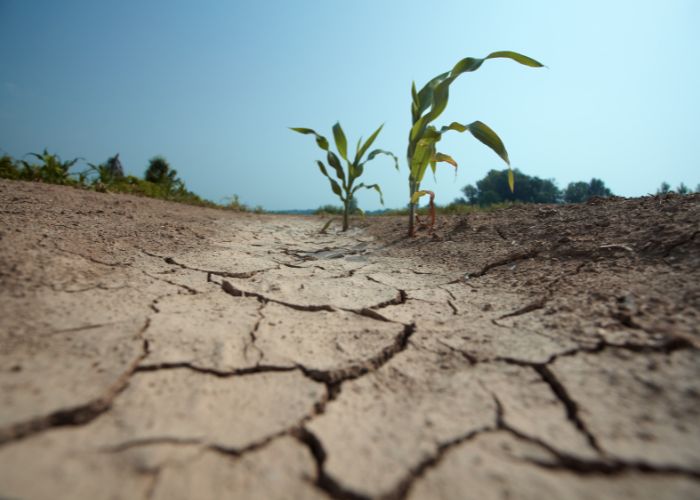MADRID – As Spain grapples with the harsh realities of climate change, the nation’s fields and farms are increasingly becoming barren due to an unprecedented drought. What started as a distressing situation has now morphed into a nationwide crisis affecting 80% of the Spanish countryside. That is a considerable leap from last month’s 60%.
According to the Coordination of Agricultural Organisations (COAG), the drought is causing near-universal damage to crops and is currently affecting the entire country. Their report highlights irreversible losses across 5 million hectares of dryland grain, a distressing increase of 1.5 million hectares from figures reported in mid-April.
Livestock industry under threat
In a nation where agricultural practices significantly influence the economy, the detrimental impact of this drought does not stop at crop damage. The livestock industry is equally vulnerable due to a lack of pastures caused by insufficient rainfall and rising feed costs. Over the past month, straw prices have doubled, shooting up to €150 per tonne.
Related post: Farmers in Spain: there will be less food and it will be more expensive
A mounting economic burden
Estimating the precise economic losses posed by this drought is a challenging task. However, the Young Farmers Agricultural Association (ASAJA) has estimated that losses from the previous harvest alone exceeded €8 billion. With the current rainfall deficit and forecast for the rest of the harvest period, the financial toll could surpass this figure this year.
Irrigation and olive crops compromised
The drought has also put a strain on irrigation, causing a ripple effect on fruit and vegetable crops. In the south, the yield for olive crops, a significant Spanish produce, is anticipated to be a meagre 20% of a typical harvest. This shortfall might result in skyrocketing oil prices.
Beekeeping sector feeling the sting
Beekeeping, another significant sector in Spain, is also feeling the pinch. The scarcity of blooms, a crucial food source for bees, may eventually lead to a price hike in honey. Annually, beekeeping generates €62 million in Spain. COAG has recently appealed for a rescue plan for beekeeping, stating that half of all beekeepers are technically on the brink of bankruptcy.
Agriculture: The first victim of climate change
The devastating impact of the drought underscores the urgent need for climate-resilient agricultural practices and effective water management solutions. As the agricultural sector becomes increasingly affected by climate change, the deployment of innovative, sustainable techniques, such as drought-resistant crops and efficient water usage, is imperative.
Historically high drought costs
Last year, Spain concluded its hydrological year with a 23% deficit in rainfall compared to an average year. The agricultural association ASAJA predicted that the 2022 drought bill could escalate to an astronomical €8 billion euros across Spain.
This year, while the water shortage currently stands at a slightly lower 18.8%, forecasts for the rest of the year indicate worsening conditions. Hence, the total economic loss could exceed and even multiply the earlier estimate of €8 billion.
Just last week, the Spanish government unveiled a €2 billion package aimed at mitigating the drought’s impacts. However, the COAG believes that this falls short of the need, with many of the proposed measures expected to yield results only in the medium term. COAG emphasises that immediate action is necessary to assist farmers, particularly those in the grain and livestock sectors.


